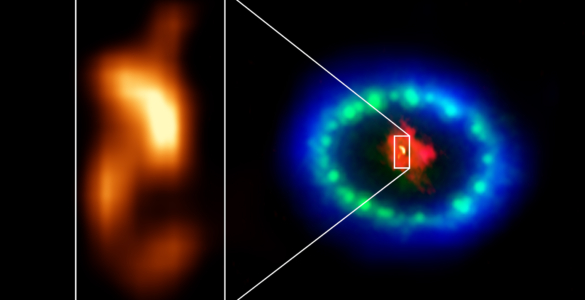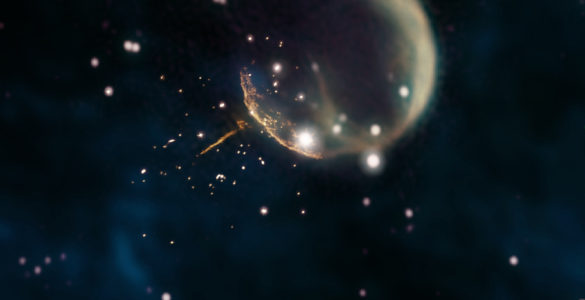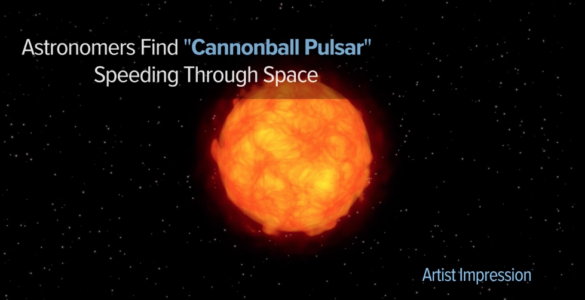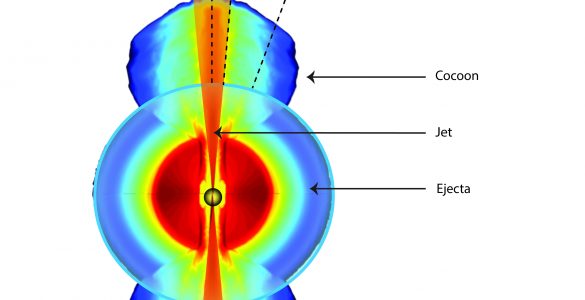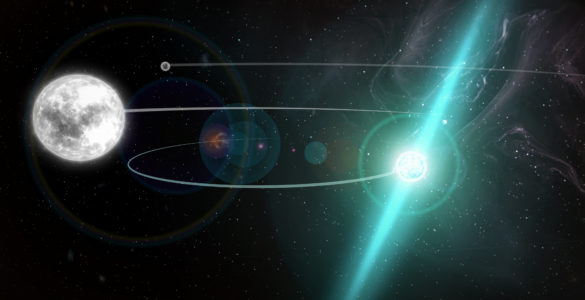How to Make a Millisecond Pulsar
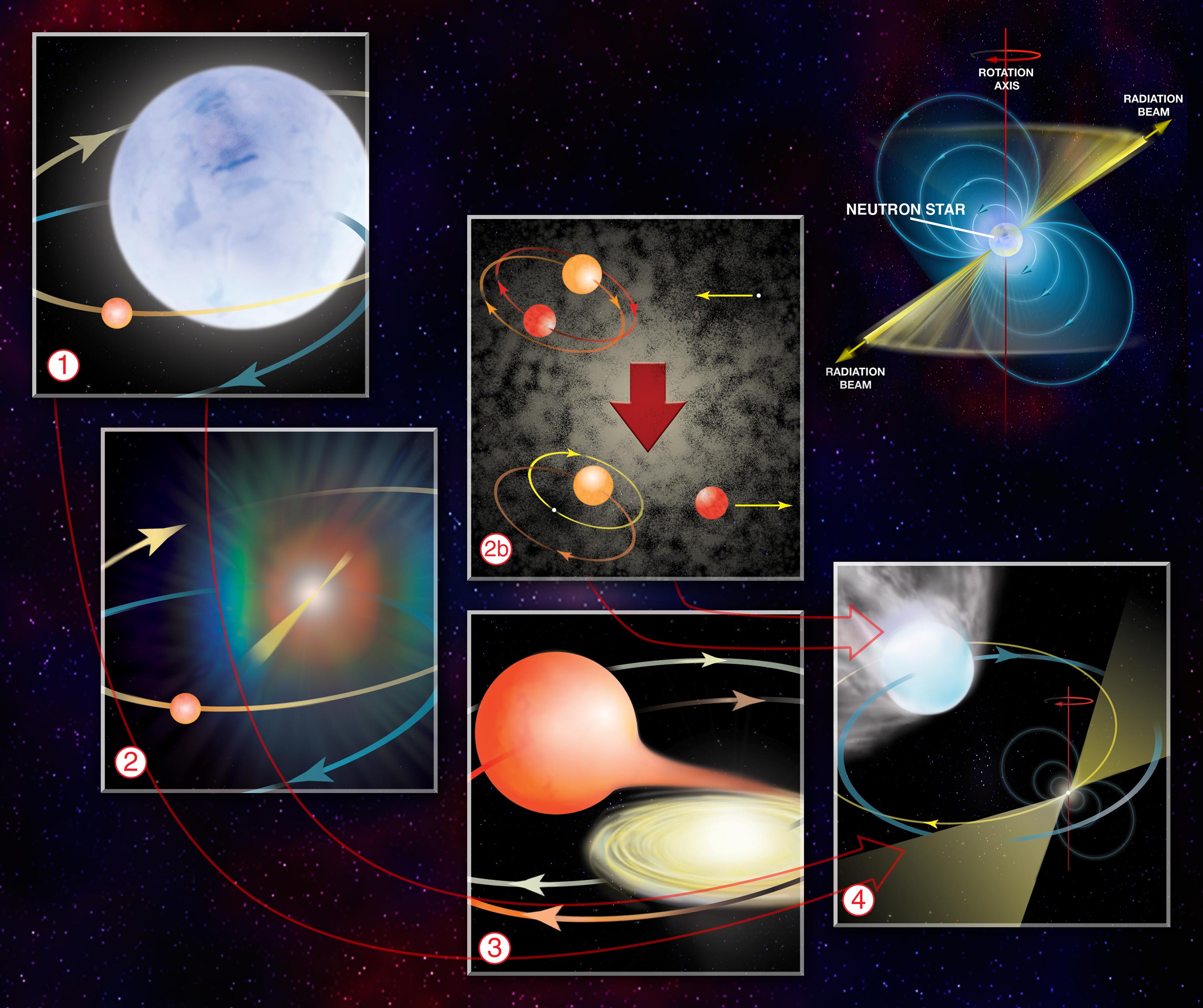
The diagram outlines each step needed to create a pulsar with a superfast spin. The Standard Scenario (1-4):
1. A massive supergiant star and a “normal” Sun-like star orbit each other in a binary star system.
2. The massive star exhausts its nuclear fuel and explodes in a supernova, leaving a neutron star as its remnant. For several tens of millions of years, that neutron star is likely active as a radio pulsar. Eventually it slows down, turns off as a pulsar and becomes simply a cooling neutron star.
3. After billions of years, and if the binary survived the supernova, the lower-mass star evolves and expands into a red giant. Material from the star spills into a disk around the neutron star and eventually onto the neutron star surface in a process known as “accretion.” Accretion transfers angular momentum to the neutron star and makes it spin more rapidly. During this process, the system is visible as an X-ray binary.
4. Once accretion ends, the neutron star is spinning very rapidly and emerges as a millisecond radio pulsar. This process is known as “recycling.” Strong “winds” from the pulsar slowly erode away the companion star, which can eclipse the pulsar’s radio emission.
But in a globular cluster (2b)…
There are so many stars packed so densely together that interactions between ancient “dead” neutron stars and normal stellar binaries can occur (top). When that happens, in a process called “exchange,” the lowest mass star is usually ejected from the binary and the neutron star replaces it (bottom). Once the remaining normal star evolves into a red giant, the rest of the standard “recycling” scenario (3-4) takes place. These interactions and exchanges explain why globular clusters have so many more millisecond pulsars per unit mass than the Galactic disk.
| Original TIFF | download | ||
| Hi-Res Full-Size | 3000 x 2513 | 632 KB | download |
| Screensize File | 1024 x 858 | download |









